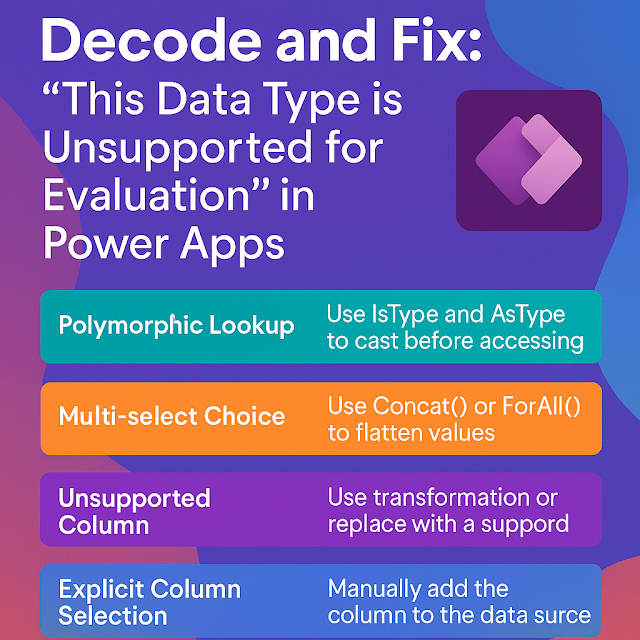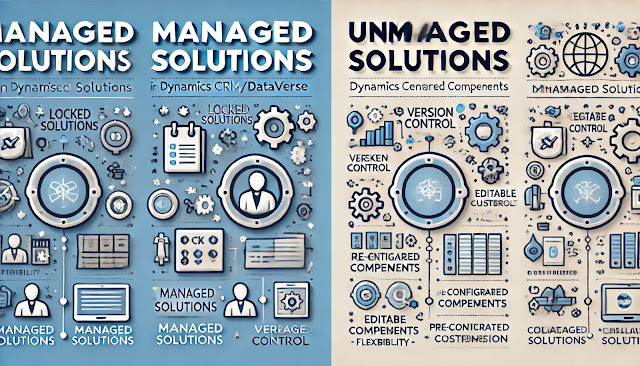Dynamics 365 Field Service : Enable and configure location tracking and geofencing
In the world of field service management, keeping track of technicians’ locations and movements is not just a convenience—it’s a necessity. It helps in efficient dispatching, real-time monitoring, and most importantly, improves customer satisfaction through accurate ETAs and swift service delivery. Microsoft Dynamics 365 Field Service offers powerful Location Tracking and Geofencing capabilities to support this need.
In this blog post, we’ll explore:
- What location tracking and geofencing are
- Why they matter in field service
- Step-by-step instructions to enable and configure them in Dynamics 365 Field Service
What is Location Tracking?
Location Tracking refers to the ability to continuously capture and monitor the real-time location of field technicians using their mobile devices. This is typically powered by GPS and synced with Dynamics 365 through the Field Service mobile app.
Key Use Cases:
- Real-time technician location on the schedule board map
- Accurate ETA for customers
- Historical travel routes for auditing or training
- Optimized resource dispatching
What is Geofencing?
Geofencing involves creating a virtual perimeter (or boundary) around a geographical location such as a customer site or warehouse. When a technician enters or exits this boundary, predefined automated actions or notifications can be triggered.
Common Examples:
- Automatically check in a technician upon arriving at the job site
- Notify dispatcher if the technician is delayed or leaves too soon
- Start/stop work orders or timesheets based on location
Step-by-Step: Enable and Configure Location Tracking
Prerequisites:
- Dynamics 365 Field Service environment
- Bookable Resources set up as field agents
- Installed Field Service Mobile (Power Platform-based mobile app)
- Proper user security roles: typically Field Service - Resource or Mobile User
Step 1: Enable Location Tracking in Settings
1. Navigate to Field Service Admin App
- Go to your Dynamics 365 environment → Open Field Service Admin app.
2. Go to Field Service Settings
- In the sitemap, click Settings → Field Service Settings.
3. Enable Location Tracking
- Find the section Mobile Settings.
- Set Location Tracking Enabled to Yes.
- Define a tracking interval (e.g., every 5 minutes).
Step 2: Enable Location Sharing on Mobile Devices
On each technician’s mobile device:
- Open the Field Service (Power App).
- Go to the Settings section in the app.
- Ensure “Allow Location” is enabled in app permissions.
- Background location access should be set to always (on iOS/Android settings).
Note: Battery optimization settings may interfere with real-time updates—recommend setting the app to not be battery optimized.
Step 3: View Location in Schedule Board
- Open the Field Service → Schedule Board.
- Select Map View.
- You’ll now see real-time or last-known locations of technicians marked on the map.
- You can hover over their icons to view names and movement trails.
Step-by-Step: Configure Geofencing
Step 1: Set Up Geofences for Accounts or Work Orders
1. Navigate to Field Service → Accounts or Work Orders.
2. Open the record you want to geofence.
3. Add latitude and longitude coordinates (either manually or using the map control).
4. Save the record.
Step 2: Define Geofence Settings
- Go to Settings → Geofencing Settings (this may need enabling in your org or accessed via environment variables).
Set the following options:
- Enable Geofencing: Yes
- Define entry and exit radius (e.g., 150 meters)
- Define triggers:
- Start/stop work order
- Log entry/exit events
- Send alerts to dispatcher/manager
Step 3: Automate Geofence Triggers Using Power Automate
You can create a Power Automate flow triggered on the Work Order Geofence Entry/Exit events.
Example:
- Trigger: When Geofence Event is created
- Condition: If Event = “Entered”
- Action: Start Time Entry + Notify Manager
Security and Compliance Considerations
- Privacy: Always inform technicians about location tracking and its purpose.
- Data retention: Configure how long you store location data—balance operational needs with data privacy.
- Access Control: Limit who can view location history or live tracking.
Final Thoughts
Enabling location tracking and geofencing in Dynamics 365 Field Service can significantly improve efficiency, safety, and transparency in field operations. While the setup requires some configuration on both the admin and technician side, the ROI in terms of time saved, improved customer service, and operational control is substantial.
With careful implementation and respect for user privacy, these features can be game-changers for any service organization aiming to modernize and optimize their field workforce.











Comments
Post a Comment